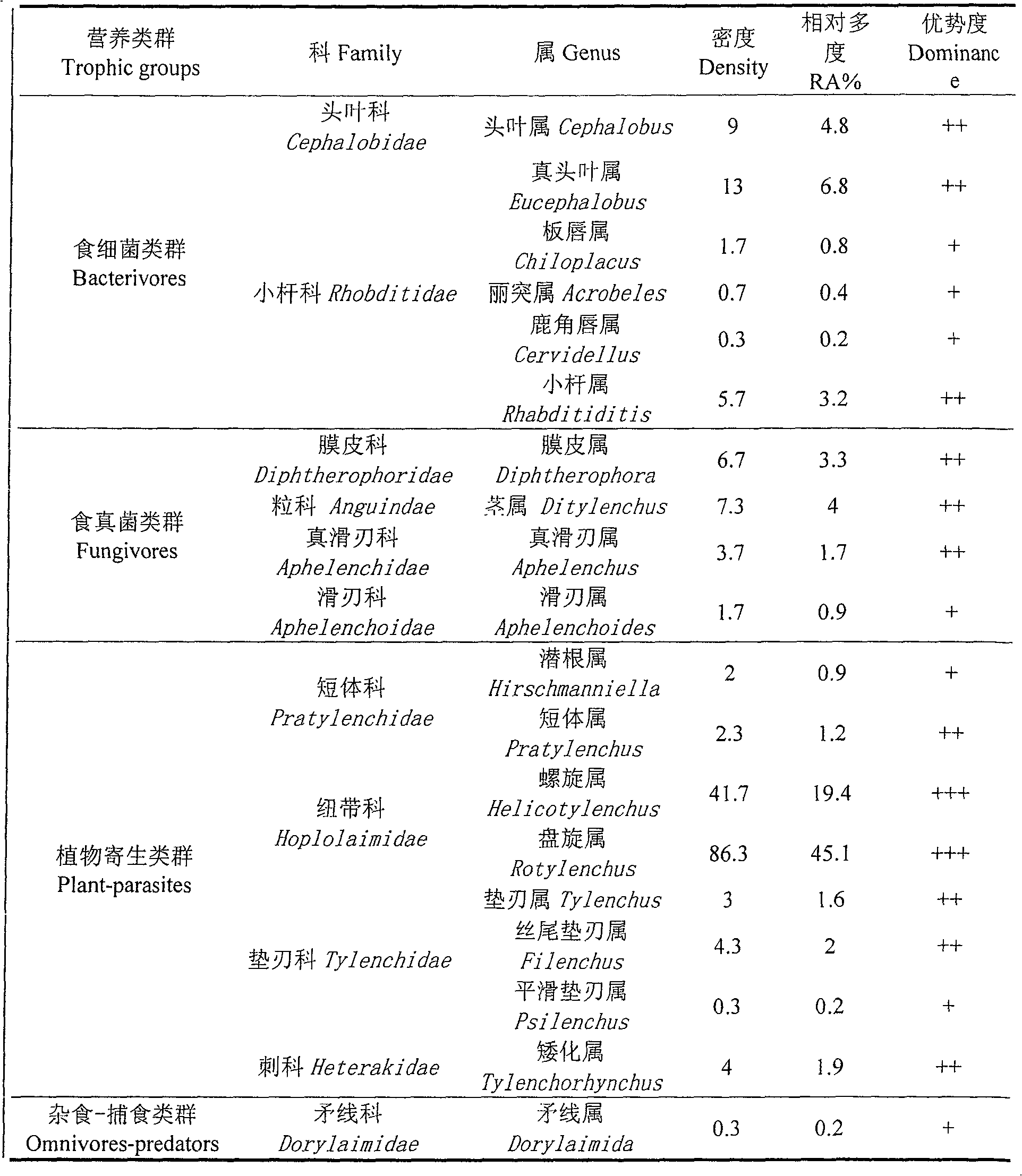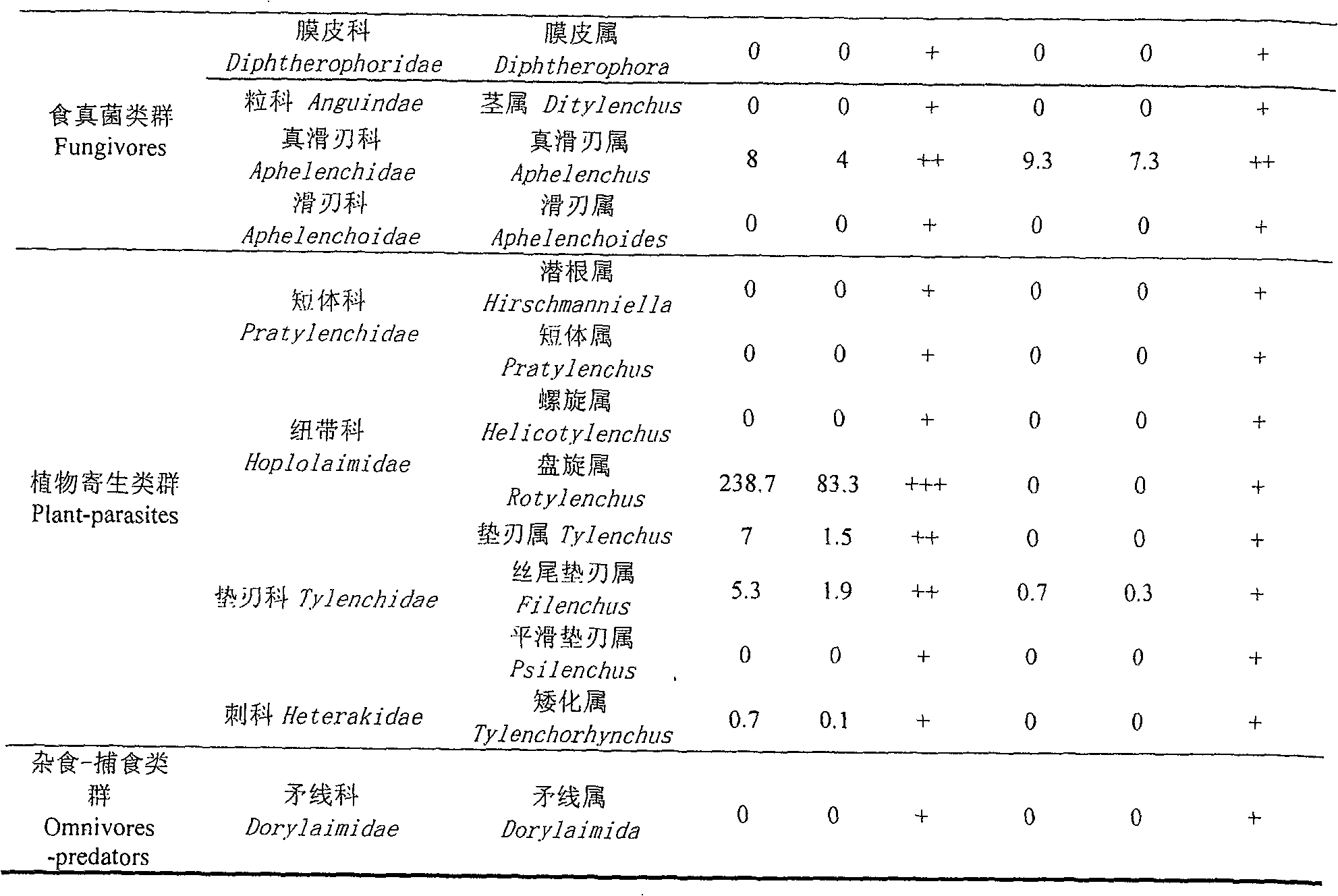Method for controlling grassplot unwanted nematode through applying stroma with consumer waste compost
A domestic garbage and turf technology, applied in the field of plant protection, can solve the problems of turfgrass growth and thinness, affect the lawn landscape, and slow growth, and achieve the effects of vigorous growth, good substrate environment, and prolonged growth period
- Summary
- Abstract
- Description
- Claims
- Application Information
AI Technical Summary
Problems solved by technology
Method used
Image
Examples
Embodiment 1
[0051] (1) Sorting and sieving municipal solid waste compost to remove impurities in the compost, so as to prepare the application material for lawn cultivation;
[0052] (2) In summer, about 500g of soil was collected from the lawn of Tianjin Museum Square at a depth of 10cm from the rhizosphere of the lawn grass. The soil was packed into bags and sealed, and brought back to the laboratory for processing. The soil to be tested was a mixed sample of 5 points, and before the experiment started, the species and quantity of nematodes in the soil were separated and identified as the background data. Among them, the typical coiled genus Rotylenchus has a density of 86.3 and a relative abundance of RA45.1%.
[0053] (3) 350g of garbage compost (inactivated) and 350g of soil (containing nematodes) are mixed evenly into flowerpots; 2 ) uniformly sow in the uniformly mixed lawn cultivation substrate; then bury the flowerpot in the experimental field, with the distance between the uppe...
Embodiment 2
[0057] (1) Sorting and sieving the compost of municipal solid waste to remove the sundries in the compost, so as to be used as the application material for lawn cultivation.
[0058] (2) In summer, about 2000g of lawn soil was collected from the Tianjin Station Square, and the soil was collected from the rhizosphere of the lawn grass at a sampling depth of 10cm, sealed in bags, and brought back to the laboratory for processing. The soil to be tested was a mixed sample of 5 points, and before the experiment started, the species and quantity of nematodes in the soil were separated and identified as the background data. Among them, the typical helical genus Helicotylenchus has a density of 41.77 and a relative abundance of RA 19.4%.
[0059] (3) 750g of garbage compost (inactivated) and 350g of soil (containing nematodes) are mixed evenly into flower pots; 2 ) uniformly sow in the uniformly mixed lawn cultivation substrate; then bury the flowerpot in the experimental field, with...
Embodiment 3
[0063] (1) Sorting and sieving the compost of municipal solid waste to remove the sundries in the compost, so as to be used as the application material for lawn cultivation.
[0064] (2) In summer, about 1000g of soil was collected from the lawn soil of the square flower bed, and the soil was taken from the rhizosphere of the lawn grass, with a sampling depth of 8cm, sealed in bags, and brought back to the laboratory for processing. The soil to be tested was a mixed sample of 5 points, and before the experiment started, the species and quantity of nematodes in the soil were separated and identified as the background data. Among them, the typical dwarf genus Thlenchorhynchus has a density of 4 and a relative abundance of RA 1.9%.
[0065] (3) Garbage compost (inactivated) 3000g and soil (containing nematodes) 1500g are mixed evenly and packed into flower pots; 2 ) uniformly sow in the uniformly mixed lawn cultivation substrate; then bury the flowerpot in the experimental field...
PUM
 Login to View More
Login to View More Abstract
Description
Claims
Application Information
 Login to View More
Login to View More - R&D
- Intellectual Property
- Life Sciences
- Materials
- Tech Scout
- Unparalleled Data Quality
- Higher Quality Content
- 60% Fewer Hallucinations
Browse by: Latest US Patents, China's latest patents, Technical Efficacy Thesaurus, Application Domain, Technology Topic, Popular Technical Reports.
© 2025 PatSnap. All rights reserved.Legal|Privacy policy|Modern Slavery Act Transparency Statement|Sitemap|About US| Contact US: help@patsnap.com



